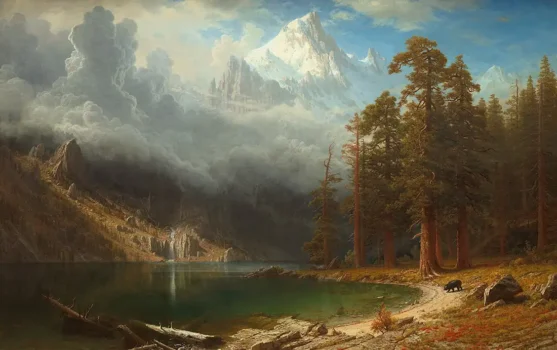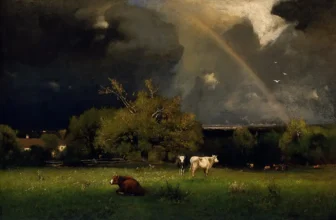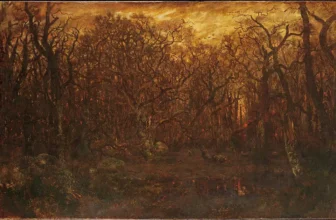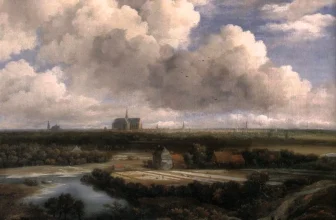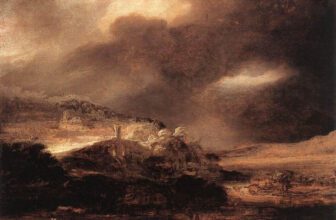Mount Corcoran by Albert Bierstadt: A Majestic Vision of the American West
Shopping Ads: Invest in Hidden Masterpiece: Rare Antique Oil Paintings For Sale. Limited Originals Available 💰😊 Are you looking for authentic hidden masterpiece? Explore old master antique oil paintings from the Renaissance and Baroque eras. From 16th-century portraits to 18th-century landscapes. Authenticity guaranteed, Old Master antique oil paintings for sale. Shop Now! 🎨 Renaissance And Baroque Art Old Master Portrait Paintings Landscape Antique PaintingsAmong the most breathtaking visions of the American landscape ever committed to canvas stands “Mount Corcoran” (c. 1876–1887), an oil painting by Albert Bierstadt, the celebrated painter of the American West. Known for his grand, luminous scenes filled with divine light and dramatic mountains, Bierstadt’s work transcends simple landscape painting, it captures the spirit of discovery, national pride, and the sublime beauty of untouched wilderness.
“Mount Corcoran” is more than a depiction of a mountain, it is a spiritual composition, a symbol of 19th-century American optimism, and a romanticized interpretation of nature’s power. The painting remains one of Bierstadt’s most complex and discussed works, both for its visual grandeur and for the mystery surrounding its creation and meaning.
The Story Behind Mount Corcoran – A Dream of the Sierra Nevada
Albert Bierstadt: Painter of Light and Majesty
Born in Germany in 1830 and raised in the United States, Albert Bierstadt became one of the foremost painters of the Hudson River School, a movement known for its romantic depictions of American landscapes infused with moral and spiritual overtones. Bierstadt’s art was not mere documentation, it was visual poetry, transforming the wilderness into an emblem of divine creation.
In the mid-19th century, Bierstadt joined several expeditions to the American West, including the Rocky Mountains, Yosemite, and the Sierra Nevada. These journeys inspired a lifetime of paintings that revealed the grandeur of territories largely unknown to eastern audiences. His works were often shown in major exhibitions, where they captured imaginations and helped shape America’s cultural identity.
The Inspiration for Mount Corcoran
The inspiration for Mount Corcoran likely came from Bierstadt’s travels through the Sierra Nevada Mountains of California in the 1860s. The mountain itself, Mount Corcoran, was named by Bierstadt in honor of William Wilson Corcoran, the wealthy Washington, D.C. banker and philanthropist who founded the Corcoran Gallery of Art.
However, historians note that Bierstadt’s Mount Corcoran is a composite landscape, combining several different views from the Sierra Nevada range rather than depicting a single geographic location. This artistic liberty allowed him to design a perfect, almost mythical landscape, a synthesis of the American frontier’s grandeur.
The result is not a literal mountain but an idealized mountain, a representation of nature’s magnificence and man’s spiritual connection to it.
How Albert Bierstadt Painted Mount Corcoran
Bierstadt was known for his meticulous process. He would spend months sketching in the wilderness, making quick oil studies and detailed pencil drawings on site. Later, in his studio, often in New York, he would compose large-scale canvases from memory, notes, and imagination.
The Mount Corcoran painting was created during the late phase of Bierstadt’s career, between 1876 and 1887. This was a period when his reputation was fading due to changing artistic tastes, yet his technical mastery and dedication to monumental landscapes remained undiminished.
Technique and Composition
Medium: Oil on canvas
Dimensions: Approximately 213.4 × 343.7 cm (7 × 11.3 feet)
Style: Romantic Realism, with luminous atmospheric effects typical of the Hudson River School
Bierstadt layered his colors to create luminosity, a glowing effect that seemed to make the painting emit light from within. His skies often feature an ethereal radiance, achieved through delicate glazes and a careful gradation of tone.
The composition of “Mount Corcoran” follows the classical landscape formula: a balanced foreground with trees and water, a middle ground leading the eye inward, and a dramatic mountain rising into a radiant sky. Yet, the scale is immense, the mountains appear almost divine, dwarfing the human presence below.
Bierstadt was a master of atmospheric perspective, where the distant peaks fade into a bluish haze, creating a sense of infinite depth. This technique invites viewers to step into the scene and feel the awe of standing before nature’s cathedral.
What Mount Corcoran Represents – The Meaning Beyond the Landscape
A Symbol of Manifest Destiny
“Mount Corcoran” was painted during an era when America was expanding westward under the belief of Manifest Destiny, the idea that the nation’s expansion across the continent was divinely ordained. Bierstadt’s majestic landscapes became visual embodiments of this ideology, portraying the western frontier as a new Eden, untouched, pure, and full of promise.
In this light, Mount Corcoran represents not just a mountain but the American dream itself, the promise of vast opportunity, natural wealth, and divine favor. The painting’s scale and grandeur mirror the nation’s ambition and the belief that progress and nature could coexist in harmony.
Spiritual and Romantic Symbolism
Bierstadt’s landscapes often carried religious undertones. The radiant light breaking through clouds in “Mount Corcoran” symbolizes divine presence, transforming the mountain into a sacred altar. The glowing sky, reflective waters, and misty valleys evoke a world untouched by sin, a paradise on earth.
This spiritual atmosphere connects Bierstadt’s art to the Romantic movement, which emphasized the sublime, an overwhelming beauty that inspires awe and humility before nature’s power. The mountain becomes a metaphor for the eternal and the transcendent, suggesting that in the wilderness, man might glimpse the hand of God.
Nature as the True Cathedral
In “Mount Corcoran,” Bierstadt elevates nature to the level of architecture. The massive peaks rise like cathedral spires, illuminated by celestial light, while the lake mirrors the heavens below. This duality between earth and sky, reflection and reality, reinforces the idea that nature is both divine creation and sacred space.
There are no visible churches or cities, only the grandeur of creation itself. In this way, the painting invites viewers to worship not in buildings but in the open air, under the light of creation.
Analysis of Mount Corcoran – The Artistic and Emotional Power
The Composition: Balance Between Majesty and Peace
At first glance, “Mount Corcoran” is overwhelming in its scope, but Bierstadt carefully balances drama and serenity. The vast mountain range commands the upper half of the canvas, while the calm lake below provides a meditative counterpoint.
Foreground details, trees, rocks, and a few scattered figures or animals, offer scale, emphasizing how small humanity is compared to the monumental landscape.
The light serves as the narrator of the painting. It leads the viewer’s gaze from the glowing sky down to the mountain peaks and finally to the reflective lake. The effect is cinematic, almost spiritual, as if the viewer is witnessing the moment when nature and heaven unite.
Color and Light: Bierstadt’s Signature Luminosity
One of Bierstadt’s greatest achievements was his manipulation of light. In “Mount Corcoran,” golden sunlight breaks through the clouds, bathing the mountain in an almost supernatural glow. The palette shifts from warm yellows and oranges near the horizon to cool blues and grays in the distance, creating both warmth and depth.
This play of light is not just decorative, it conveys emotion. The golden light represents hope, enlightenment, and divine approval, while the shadowed valleys below symbolize mystery and the unknown. Together, they create a narrative of human exploration and spiritual awakening.
Human Figures and Scale
While not the main focus, tiny human figures or animals sometimes appear in Bierstadt’s compositions, including “Mount Corcoran.” They act as visual anchors, reminding viewers of humanity’s smallness within the vastness of creation.
Their inclusion transforms the painting from mere scenery into a philosophical statement, that human destiny is tied to nature’s grandeur, and that civilization must remain humble before it.
Controversies Surrounding Mount Corcoran
Despite its beauty, “Mount Corcoran” has been surrounded by debate and mystery.
1. The Question of Authenticity and Completion
Art historians have long discussed whether the Mount Corcoran painting is truly finished. The painting was found in Bierstadt’s studio after his death in 1902, and some areas appear less refined than others, leading to speculation that it might have been a work in progress.
Nevertheless, even as an unfinished piece, it stands as a testament to Bierstadt’s vision and ambition.
2. The Debate on Realism vs. Idealism
Critics of the late 19th century began to turn against Bierstadt’s romantic idealism. They accused him of exaggerating landscapes, creating scenes that were “too perfect to be real.” For some, “Mount Corcoran” epitomized this issue, it combined multiple mountain views into one, making it a landscape of imagination rather than documentation.
Yet, modern viewers often see this synthesis not as deceit but as artistic genius. Bierstadt wasn’t painting geography; he was painting the soul of a continent.
3. The Shift in Art Movements
By the 1880s, realism and impressionism had become dominant in the art world. Bierstadt’s grand Romantic style was viewed as outdated. “Mount Corcoran,” painted during this transitional period, was largely ignored by critics who preferred the urban realism of artists like Thomas Eakins or the delicate light studies of the Impressionists.
It wasn’t until the 20th century that Bierstadt’s work was rediscovered and reappreciated for its technical brilliance and emotional impact.
Public and Critical Opinion on Mount Corcoran
Today, “Mount Corcoran” is recognized as one of Bierstadt’s masterpieces, and public opinion has dramatically shifted in his favor. Art historians and collectors now praise his paintings for their technical excellence, visionary composition, and cultural significance.
Viewers often describe “Mount Corcoran” as awe-inspiring, spiritual, and deeply moving. Its vast scale and golden light create a meditative experience that connects modern audiences to the same sense of wonder Bierstadt evoked over a century ago.
Modern Interpretation
Contemporary scholars view “Mount Corcoran” as both a cultural artifact and an environmental statement. It reflects a time when Americans believed in the limitless potential of their land, but it also warns of nature’s fragility.
In an age of environmental awareness, Bierstadt’s painting reminds us of the need to preserve the wilderness he so reverently depicted. His idealized mountain now serves as a symbol of what humanity stands to lose if it forgets the sacredness of nature.
The Legacy of Mount Corcoran
A Monument of American Art
“Mount Corcoran” occupies a special place in American art history. It embodies the Romantic spirit of the 19th century, merging artistic mastery with national identity. Bierstadt’s ability to elevate the American landscape to mythic proportions influenced generations of artists and filmmakers, from landscape photographers like Ansel Adams to directors like Terrence Malick.
His luminous scenes of the West helped define the visual language of American grandeur.
Where Is Mount Corcoran Today?
Today, “Mount Corcoran” by Albert Bierstadt is housed in the Smithsonian American Art Museum in Washington, D.C. It entered the museum’s collection through the Corcoran Gallery of Art, whose founder, William Wilson Corcoran, was the very man Bierstadt honored in the painting’s title.
The artwork remains a centerpiece of the Smithsonian’s collection of 19th-century American landscapes, continuing to attract visitors from around the world.
Type of Art: Romantic Realism and the Sublime
“Mount Corcoran” is classified as a Romantic Realist landscape painting. It blends accurate natural detail with idealized composition and emotional intensity, hallmarks of the Hudson River School.
It also embodies the concept of the sublime, central to Romanticism, art that evokes awe through nature’s power and majesty. The sublime, as defined by philosophers like Edmund Burke, describes the thrilling mix of beauty and fear experienced when confronting the vast forces of the natural world.
Bierstadt’s glowing skies, towering peaks, and serene waters all convey this sense of sublime harmony and transcendence.
Why Mount Corcoran Still Matters
In an age dominated by technology and urbanization, Bierstadt’s “Mount Corcoran” continues to resonate. It speaks to the eternal relationship between humanity and nature, reminding us of our smallness within the cosmic order.
The painting’s grandeur, spirituality, and optimism capture a moment in history when Americans believed that the wilderness was both a frontier and a cathedral, a place of discovery, faith, and national pride.
It stands as a visual anthem of the American spirit, timeless and universal.
The Eternal Light of Bierstadt’s Vision
Albert Bierstadt’s “Mount Corcoran” is more than just a landscape, it is an act of devotion, a prayer painted in light and color. Through his grand vision, Bierstadt offered not only a view of America’s mountains but also a reflection of humanity’s longing for transcendence and harmony with nature.
The painting remains a masterpiece of Romantic imagination, balancing realism with dreamlike idealism. Its enduring power lies in its ability to stir emotion, to make us pause, reflect, and stand in awe of the world’s beauty.
More than a century later, Mount Corcoran continues to shine, not only as a symbol of the American West but as a reminder of the divine grandeur that exists wherever light touches the earth.
